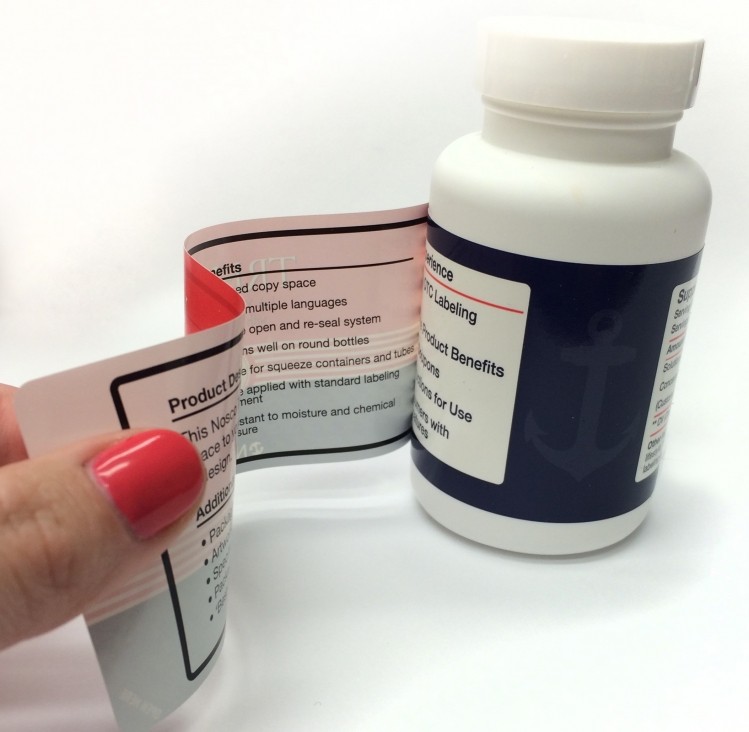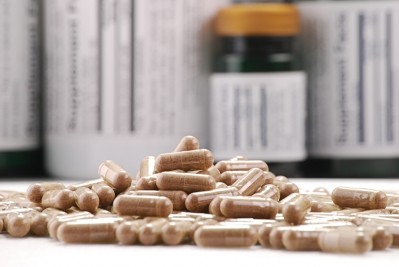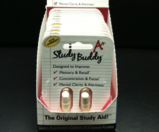Nosco: Beating the ‘boring’ connotation in supplement packaging

But well designed and functional packaging does much more—from communicating the product’s benefits and reinforcing brand identity, to giving a sense of personality, and encouraging customer loyalty and repeat orders, according to Illinois-based printed packaging firm Nosco Inc.
Given that many consumers buy supplements to replace a prescription or over-the-counter medication, validity and concise descriptions of uses and benefits tend to win out over flashy packaging.
“The industry is definitely trending more toward decorative packaging options, using more innovation and unique elements, such as metallics, high glosses and UV screens for more texture,” Heather Hill, marketing manager for Nosco, told NutraIngredients-USA. “But supplements are still very visually more about the product than the look of the packaging. But because the market continues to expand, manufacturers have no choice but to make the packaging stand out. The competition is only getting fiercer.”
Multi-panel labels make the most of limited real estate
Indeed, Brent Anderson, packaging advisor for Nosco, says that routinely one of the top concerns among supplement marketers is how to fit all the certifications, affiliations, test results and graphs that demonstrate the product’s legitimacy and reliability when they’re working with limited real estate.
“One of the more common questions that I hear, along with sustainability, is that manufacturers are continually feeling pressure—whether regulatory or marketing driven—that they need to include more product info on the package,” Anderson said. “One way we help them address that is through multi-panel labeling. If you think about the peel-back version on traditional labels, this allows up to 200% more copy space. You can also enclose an entire booklet within a label, which is both easy to use and functional. It allows marketing and regulatory to have the space they need without impacting bottle size.”
Hill added that multi-panel labels enable brands to differentiate themselves without the need for a larger footprint on the shelf. “Having a larger footprint on the shelf costs money, takes up space, and marketers can’t get as much inventory out as a result. So more brands are moving to multi-panel labels, where they can cite information, show graphs and certifications, and be more creative with their information without having to sacrifice visual appeal.”
Engaging the senses
As consumers make the decision to purchase a product within a few seconds of picking it up, engaging more than just the eye can mean the difference between buying it or putting it back on the shelf, Anderson noted.
“Soft touch is a growing trend in supplement packaging,” he said. “If you pick up a supplement bottle and run your finger over the label, it probably has a slick, smooth feeling. Soft touch adds a little more texture and soft feel. It’s another way to engage multiple senses, so the consumer picks it up and immediately recognizes that it’s different.”
Reference shapes can also be very powerful, especially because supplements have historically all come in very similar container shapes, Hill noted. “Just like shampoos used to be all the same shape, now we see the market changing up shape completely to stand out and differentiate. Shape could play a big factor in the supplement market.”
Sustainability: more than just using recycled materials
Aside from balancing copy space, the second most asked question of Nosco advisors, Anderson says, is, “What do you offer for sustainability?” But many marketers are unaware that sustainable packaging is about more than simply using recycled materials.
“When most people think of sustainability, they say, we need recycled material. Yes, that is an option. There are various sustainable and recyclable materials available—some you can tell because the paper is brown, for example,” he said. “There’s also chain of custody certification to show you’re working with a sustainable forest, meaning anything that’s cut down is replaced.”
But it doesn’t stop there; brands can also reconsider their manufacturing method for print production, Anderson added. “Digital printing, for example, doesn’t use printing plates, and it uses less ink for a 30% lower carbon footprint than traditional methods. Sustainability goes much further than printing on recycled paper.”
Augmented reality and personalized printing
One of the initial ways marketers connected smartphone-enabled technology to packaging, QR (quick response) codes—bar codes on a package that consumers scan for additional product information—are now going out of vogue, as firms experiment instead with the more promising augmented reality (AR). With this technology, consumers scan an icon or an image with an app that then opens a video, animation or other interactive content for information about the product or brand.
While Nosco does still produce QR codes for companies, Anderson and Hill forecast they will be replaced in short order by AR, given that it’s a 3D platform with a lot more capabilities than QR codes. “It’s more immediate; you can do video and animation,” Hill said. “Overall, it has a much higher cool factor. We’re going to see this as an up and coming trend.”
Another printing trend that has taken off in the food industry but has yet to manifest in supplements is personalization (think Coca-Cola’s “Share a Coke” customized cans and bottles).
Hill thinks it has the potential to redefine packaging design for mass markets. “Personalization is going to set a lot of brands into motion,” Hill said. “Whether it will reach the natural health channel and how it relates to other markets will be interesting to see. I can see more and more bigger brands like candy companies and others doing personalization to target select consumers.”
Above all, Anderson said, manufactures should consult with a professional printer to ensure their vision "carries through all the way to the shelves."









